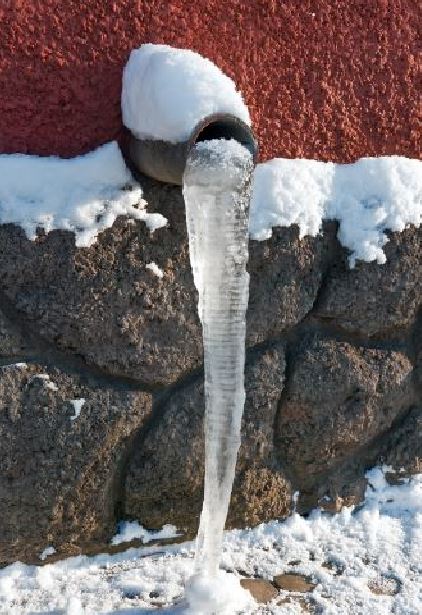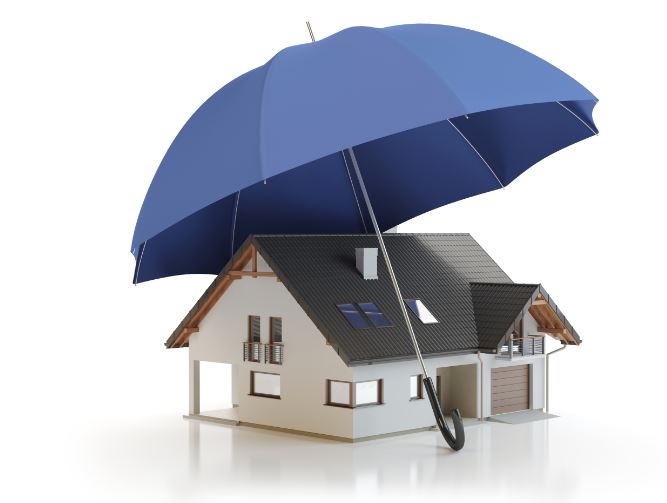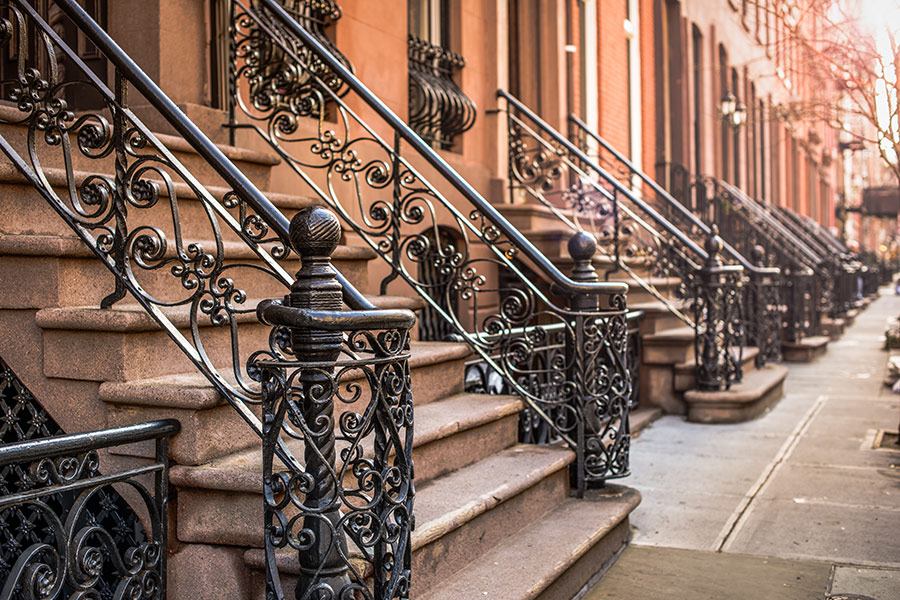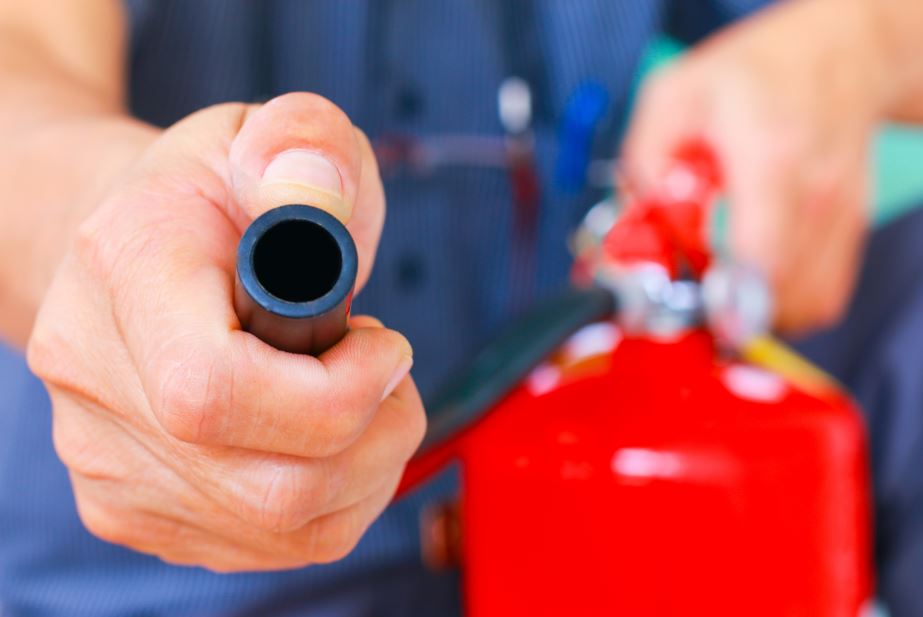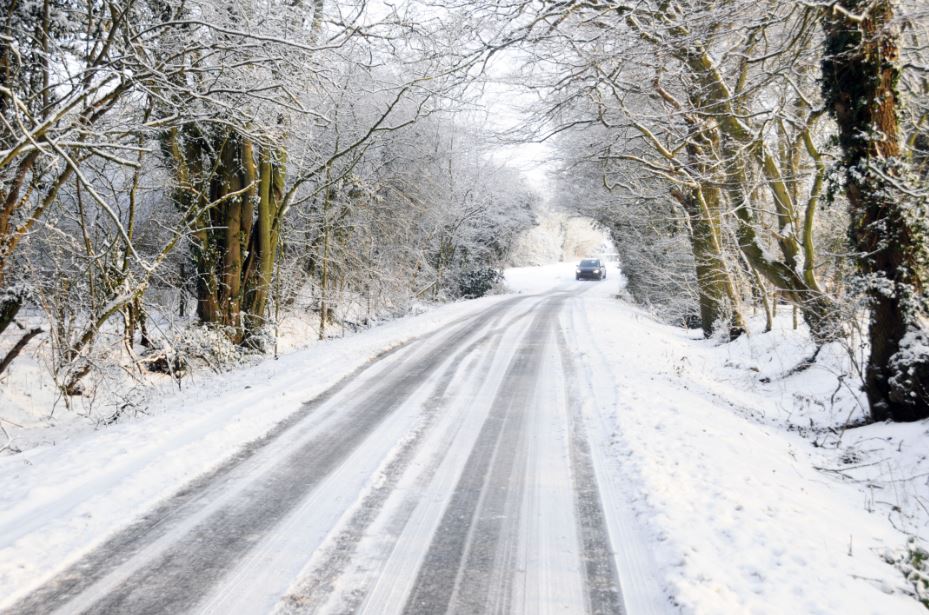
The snow and ice are here, are you prepared to drive in these conditions? Planning and preventative maintenance are important year-round—but especially when it comes to winter driving.
Before You Go
Get Your Car Serviced
No one wants their car to break down in any season, but especially not in cold or snowy winter weather. Start the season off right by ensuring your vehicle is in optimal condition.
- Visit your mechanic for a tune-up and other routine maintenance.
- Have your vehicle checked thoroughly for leaks, badly worn hoses, or other needed parts, repairs, and replacements.
Know Your Car
Every vehicle handles differently; this is particularly true when driving on wet, icy, or snowy roads. Take time now to learn how your vehicle handles under winter weather driving conditions.
- Before driving your vehicle, clean snow, ice or dirt from the windows, the forward sensors, headlights, tail lights, backup camera and other sensors around the vehicle.
- When your area gets snow, practice driving on snow-covered or icy roads— but not on a main road. Sharpen your winter weather driving skills and know how your vehicle handles in snowy conditions by practicing in an empty parking lot. See your vehicle’s manual to familiarize yourself with the features on your vehicle—such as antilock brakes and electronic stability control—and how the features perform in slippery conditions. For example, your vehicle or pedals may pulsate when controlling traction.
- For electric and hybrid-electric vehicles, minimize the drain on the battery. If the vehicle has a thermal heating pack for the battery, plug your vehicle in whenever it’s not in use. Pre-heat the passenger compartment before you unplug your vehicle in the morning.
- When renting a car, become familiar with the vehicle before driving it off the lot. Know the location of the hazard lights switch in case of emergency, and review the owner’s manual so that you’re prepared for any driving situation that may arise.
Go Over Your Vehicle Safety Checklist
Battery
When the temperature drops, so does battery power. For gasoline and diesel engines, it takes more battery power to start your vehicle in cold weather. For electric and hybrid-electric vehicles, the driving range is reduced when the battery is cold, and battery systems work better after they warm up. Make sure your battery is up to the challenges of winter.
- Have your mechanic check your battery for sufficient voltage, amperage and reserve capacity.
- Have the charging system and belts inspected.
- Replace the battery or make necessary system repairs, including simple things like tightening the battery cable connections.
- Keep gasoline in a hybrid-electric vehicle, to support the gasoline engine.
Lights
See and be seen! Make sure all the lights on your vehicle are in working order. Check your headlights, brake lights, turn signals, emergency flashers, and interior lights. Towing a trailer? Be sure to also check your trailer brake lights and turn signals. Trailer light connection failure is a common problem and a serious safety hazard.
Cooling System
- Make sure the cooling system is in proper working order.
- Make sure you have enough coolant in your vehicle and the coolant meets the manufacturer’s specifications. See your vehicle owner’s manual for specific recommendations on coolant.
- Thoroughly check the cooling system for leaks or have your mechanic do it for you.
- Have the coolant tested for proper mix, proper pH (acidity) and strength of the built-in corrosion inhibitors. Over time, the rust inhibitors in antifreeze break down and become ineffective.
- Drain and replace the coolant in your vehicle as recommended by the manufacturer, to remove dirt and rust particles that can clog the cooling system and cause it to fail.
Windshield
Washer Reservoir
You can go through a lot of windshield wiper fluid fairly quickly in a single snowstorm, so be prepared for whatever might come your way.
- Completely fill your vehicle’s reservoir before the first snow hits.
- Use high-quality “winter” fluid with de-icer and keep extra in your vehicle.
Wipers and Defrosters
Safe winter driving depends on achieving and maintaining the best visibility possible.
- Make sure your windshield wipers work; replace worn blades.
- Consider installing heavy-duty winter wipers if you live in an area that gets a lot of snow and ice.
- Check to see that your front and rear window defrosters work properly.
Tires
- If you plan to use snow tires, have them installed in the fall so you are prepared before it snows. Check out www.nhtsa.gov/tires for tire ratings before buying new ones and look for winter tires with the snowflake symbol.
- Regardless of season, inspect your tires at least once a month and before long road trips. It only takes about five minutes. If you find yourself driving under less-than-optimal road conditions this winter, you’ll be glad you took the time. Don’t forget to check your spare tire.
- As the outside temperature drops, so does tire inflation pressure. Make sure each tire is filled to the vehicle manufacturer’s recommended inflation pressure, which is listed in your owner’s manual and on a placard located on the driver’s side door frame. The correct pressure is NOT the number listed on the tire. Be sure to check tires when they are cold, which means the car hasn’t been driven for at least three hours.
- Look closely at your tread and replace tires that have uneven wear or insufficient tread. Tread should be at least 2/32 of an inch or greater on all tires.
- Check the age of each tire. Some vehicle manufacturers recommend that tires be replaced every six years regardless of use, but check your owner’s manual to find out.
Stock Your Vehicle
Carry items in your vehicle to handle common winter driving-related tasks, such as cleaning off your windshield, as well as any supplies you might need in an emergency. Keep the following in your vehicle:
- Snow shovel, broom, and ice scraper.
- Abrasive material such as sand or kitty litter, in case your vehicle gets stuck in the snow.
- Jumper cables, flashlight, and warning devices such as flares and emergency markers.
- Blankets for protection from the cold.
- A cell phone with charger, water, food, and any necessary medicine (for longer trips or when driving in lightly populated areas).
Plan Your Travel and Route
Keep yourself and others safe by planning ahead before you venture out into bad weather.
- Check the weather, road conditions, and traffic.
- Don’t rush; allow plenty of time to get to your destination safely. Plan to leave early if necessary.
- Familiarize yourself with directions and maps before you go, even if you use a GPS system, and let others know your route and anticipated arrival time.
On the Road
Stay Alert
- Keep your gas tank close to full, even with a hybrid-electric vehicle. If you get stuck in a traffic jam or in snow, you might need more fuel than you anticipated to get home or to keep warm.
- If road conditions are hazardous, avoid driving if possible. Wait until road and weather conditions improve before venturing out in your vehicle.
- On longer trips, plan enough time to stop to stretch, get something to eat, return calls or text messages, and change drivers or rest if you feel drowsy.
Driving in Winter Conditions
- Drive slowly. It’s harder to control or stop your vehicle on a slick or snow-covered surface. On the road, increase your following distance enough so that you’ll have plenty of time to stop for vehicles ahead of you.
- Know whether your vehicle has an antilock brake system and learn how to use it properly. Antilock brake systems prevent your wheels from locking up during braking. If you have antilock brakes, apply firm, continuous pressure to the brake pedal. If you don’t have antilock brakes, you may need to pump your brakes if you feel your wheels starting to lock up.
Navigating Around Snow Plows
- Don’t crowd a snow plow or travel beside it. Snow plows travel slowly, make wide turns, stop often, overlap lanes, and exit the road frequently.
- The road behind an active snow plow is safer to drive on. If you find yourself behind a snow plow, stay behind it or use caution when passing.
- When you are driving behind a snow plow, don’t follow or stop too closely. A snow plow operator’s field-of-vision is limited; if you can’t see the mirrors, the driver can’t see you. Also, materials used to de-ice the road could hit your vehicle.
- Snow plows can throw up a cloud of snow that can reduce your visibility to zero in less time than you can react. Never drive into a snow cloud – it can conceal vehicles or hazards.
In an Emergency
What to Do in a Winter Emergency
If you are stopped or stalled in wintry weather, follow these safety rules:
- Stay with your car and don’t overexert yourself.
- Put bright markers on the antenna or windows and keep the interior dome light turned on.
- To avoid asphyxiation from carbon monoxide poisoning, don’t run your car for long periods of time with the windows up or in an enclosed space. If you must run your vehicle, clear the exhaust pipe of any snow and run it only sporadically — just long enough to stay warm.
For more information on safe driving or on auto insurance, contact Lallis and Higgins Insurance.
nhtsa.gov


